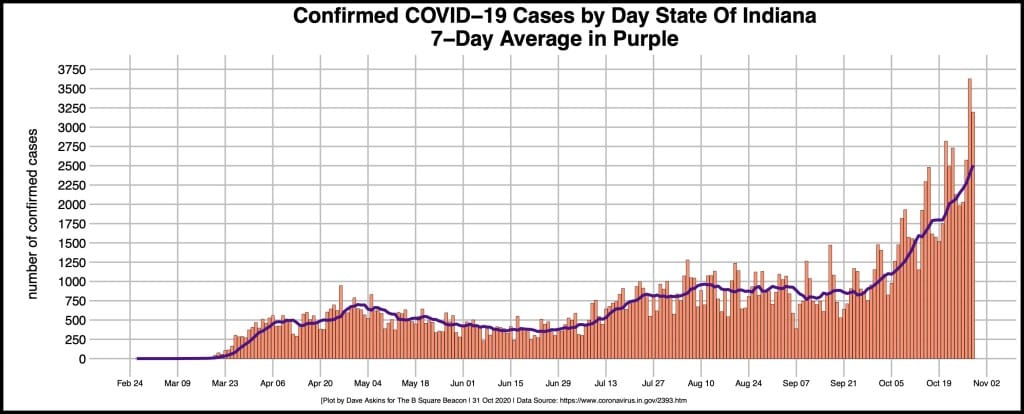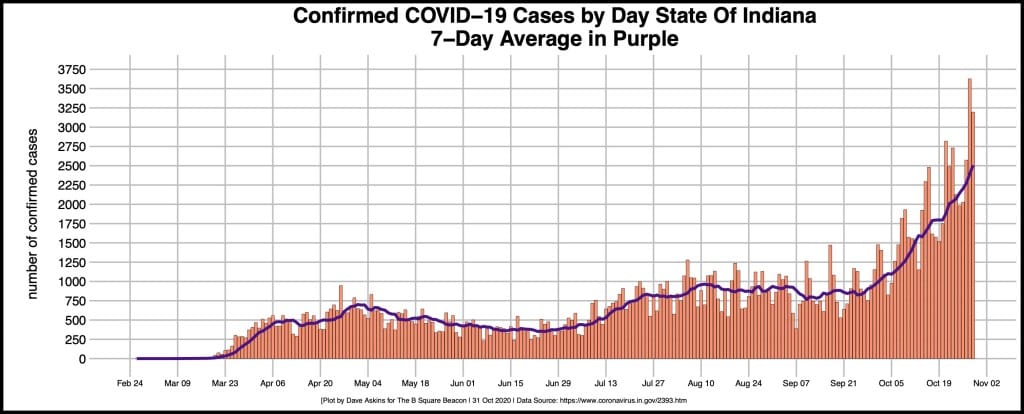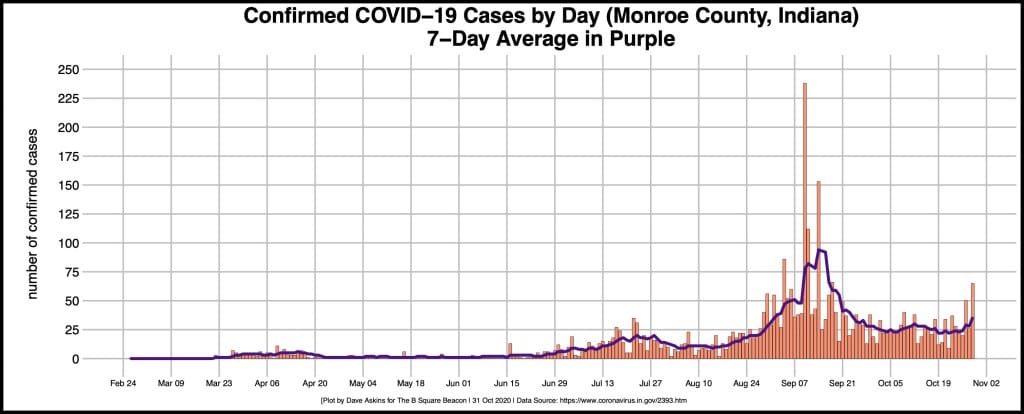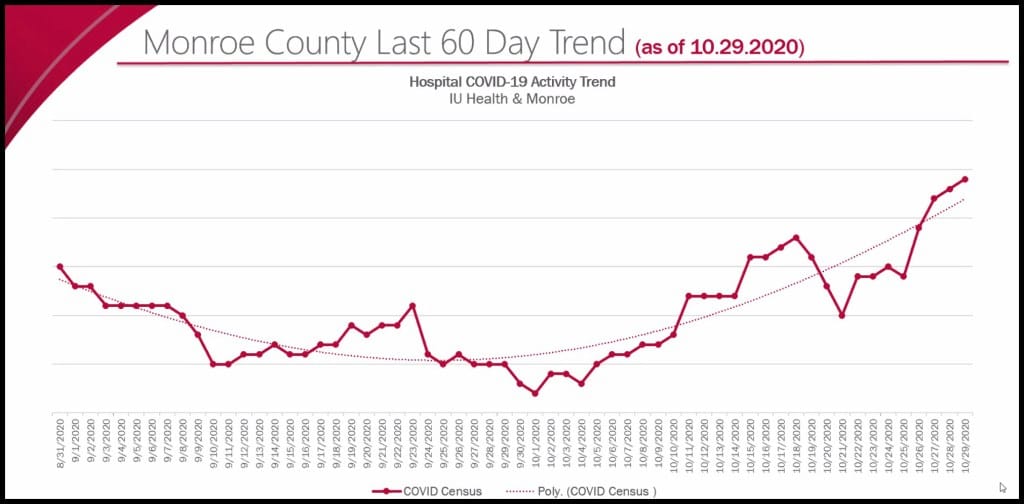Bloomington mayor on COVID-19: “An island in a sea of troubles.”




At Friday afternoon’s weekly conference of local leaders to talk about COVID-19 response, Bloomington’s mayor, John Hamilton, compared Monroe County to an island.
“An island in a sea of troubles is not in a safe spot, with rising waters all around us,” the mayor said.

He was talking about the fact that Monroe County’s COVID-19 positive test numbers and positivity rates are not as bad as elsewhere in the state, but still a cause for concern.
Local and regional hospitalization numbers are matching the statewide trend. Across Indiana, the numbers are as high now as they were in early April.
Brian Shockney, who’s president of IU Health’s south central region, said at Friday’s press conference that the south central region, of which Monroe County is a part, has hit its highest number of in-patients since the pandemic began.
Shockney added, “We are on 24-7/365 Incident Command, not only at the system level, but also at the regional level.”
Through the month of June, the statewide 7-day rolling average of confirmed cases per day stayed below 500, but by mid-July was reliably more than that. Between the end of July and mid-September, statewide daily numbers hovered between 750 and 1,000 cases.
Starting at the end of September, the statewide figures started to rise again and have not yet plateaued. The 7-day rolling average statewide stands around 2,500. On Oct. 28, a new daily high was set, with 3,626 cases.
Monroe County showed a spike at the end of August with the return of Indiana University students to campus, but by early October, the rolling daily average had settled around 25 new confirmed cases a day, as numbers statewide continued to surge.
But on two recent days, Monroe County reports showed spikes of more than 50 cases.
According to county health administrator Penny Caudill, no positive cases have yet been linked to the celebrations last week after IU’s football team vanquished Penn State in a dramatic overtime victory.
Caudill said, “What we are really seeing is family spread—families and close contacts.”
If there was spreading of the pandemic virus at the football victory celebrations, Caudill said, they’ll show up in the next few days or the next week. “So we will certainly be watching that,” she said.
Close monitoring of test results with an eye towards new cases caused by those impromptu celebrations is the approach the university will be taking, according to Kirk White, IU’s assistant vice president for strategic partnerships and the lead for IU Bloomington’s COVID response unit. “Some people have described these large events as a kind of coronavirus crockpot where things slowly cook and then we see the results later,” he said.
The university will be watching its mitigation testing results from Friday through the weekend and early the following week—that would square up with the roughly five-to-six day average time after infection that people start to show symptoms, White said.
White also said four of the large gatherings that were reported to Indiana University police after the football win violated the university’s COVID-19 policies. “We will identify those who are responsible for organizing them. And they will go through the university disciplinary process,” White said.
About the spontaneous celebrations along Kirkwood Avenue, Mayor Hamilton said, “That shouldn’t happen.” At the city council’s work session, which took place an hour before the press conference, councilmember Susan Sandberg said she would be listening at the press conference to hear what the plans are for preventing similar celebrations on Kirkwood Avenue in the future.
The street has been closed down through the end of the year in an effort to allow downtown restaurants to serve customers outdoors using the street as extra space. Sandberg called the impromptu celebrations that took place an “abuse” of the city’s effort to support local businesses.
Hamilton said, the city is coordinating with the university for future events: “We’ve been talking to Indiana University, we’re talking to our law enforcement—you know, we don’t want to overreact and make a situation worse.” Still, Hamilton said, they are talking about what to do for the next home game against the University of Michigan on Nov. 7. Hamilton called the Michigan game, “Another potential upset victory, which we will root for.”
Caudill urged caution, despite the fact that Monroe County’s numbers are better than in the rest of the state.
“We look like a little island, but we know that we are not an island alone—that we work and we play and we do things across county lines. Caudill added, “People still travel even in this pandemic. And so we can’t assume that we aren’t going to spread the virus to other communities or that it’s not going to increase in our community.”
In her report to county commissioners on Wednesday, Caudill said that the additional test center that was supposed to open by the end of October had been delayed. The revised timeline is that it will be up and running by mid-November. Some construction on the building took longer than anticipated. The state has announced that the existing OptumServe test center will continue to operate through the end of the year, according to Caudill.










Comments ()